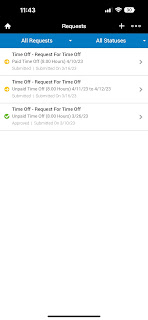Network Security
Networked Information Systems are nowadays part of most of organizations main everyday tools. These networks, especially those connected to the internet are threatened by several possible security breaches. Although organizations have in place many security measures for these breaches, we hear of these from time to time. Like organizations, individuals need to be safe networking, using computers and internet because of the level of classified data that is being used by them.
Information and system security are crucial in the world we live in. We are interconnected with our devices, phones, computers and our data is always at risk.This classified or personal information is as safe as we keep it. The value of information as a business asset or personal confidential information is extraordinary for the right reasons; otherwise competitors would have access to it, or they would lose customers confidence. Personal information in the Age of Surveillance Capitalism is so valuable to businesses that operate and study the market. “Those who own data own the future” is a quote by Yuval Noah Harari in his book 21 Lessons for the 21st Century, referring to technology giants who are capturing personal data by providing individuals with free services and entertainment, and then reselling it to advertisers.
There is several potential threats that target network systems, such as security holes/vulnerabilities, computer viruses, email spam, phishing etc. The way these incident happen is different, but they all have the same purpose, attacking a computer or network in order to milk data or gain unauthorized access. A great example of a network incident involving the ping command would be what’s called a ping flood. Ping flood is a technique used by attackers to bring down a targeted network. The way it works is the attacker sends a large number of request packets to the target network, making it impossible for the victim to respond in time. The victim gets bombarded with these request packets and the network’s incoming and outgoing channels get flooded, consuming most of the bandwidth resulting the computer to be taken down.
Phishing is a technique of attackers trying to acquire confidential or classified data such as personal information, website log-ins and passwords bank account numbers etc. The most common way used is through email or text, where the user will get a email that would appear to be from a known institution or work related, with a link that would take him to a bogus website that virtually looks legit. The user will be forced to log in, and if successful, his log-in and password would be compromised and stolen. It can also appear in forms of websites that offer you free products with trial periods, or lottery wins that would request for your credit card/bank information. The computers are vulnerable to phishing as emails like this cannot be stopped but only flagged as spam. Even if sometimes, for some reason they make it through as a regular email, the user should never visit specific links or enter personal information when asked, without verifying first that the website is legit and protected. One way to prevent phishing in this case would be moving the cursor at the link and without clicking, and the website will appear.
Computer viruses are malicious software that are designed to spread between a computer or a network of computers and cause damage to software, information and sometimes hardware but not directly. For example a virus may instruct the computer to turn off the cooling fans and it will cause the computer to overheat and damage the CPU. The common way for a computer to get a virus is if infected files are downloaded and installed, phishing attacks, clicking on a bad link or an email spam. Being connected to the Internet, a computer will always be vulnerable to viruses. Once the virus is installed in the computer it can replicate itself then delete files and corrupt data. An example of a computer virus would be a software that would run on an infinite loop and would take all the memory space in the computer and use CPU to capacity making the computer to run slow overall. It would consist from a user seeing new applications installed, system being crashed, error messages, missing files or emails that send automatically without the user sending them. The best way to protect the computer and network from viruses is not downloading unauthorized software, clicking on unknown links, and having an active antivirus software installed on the device at all times.

Comments
Post a Comment